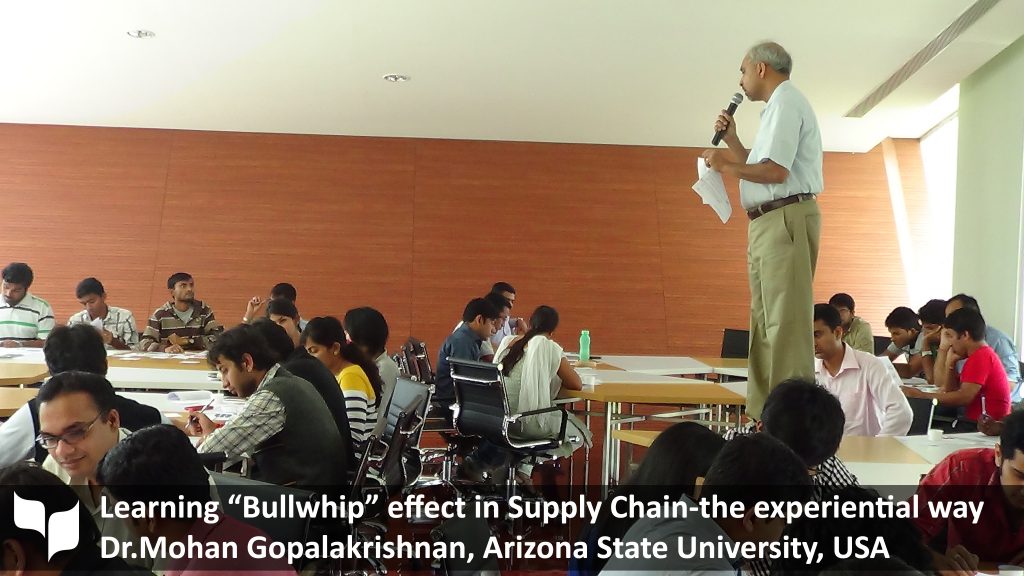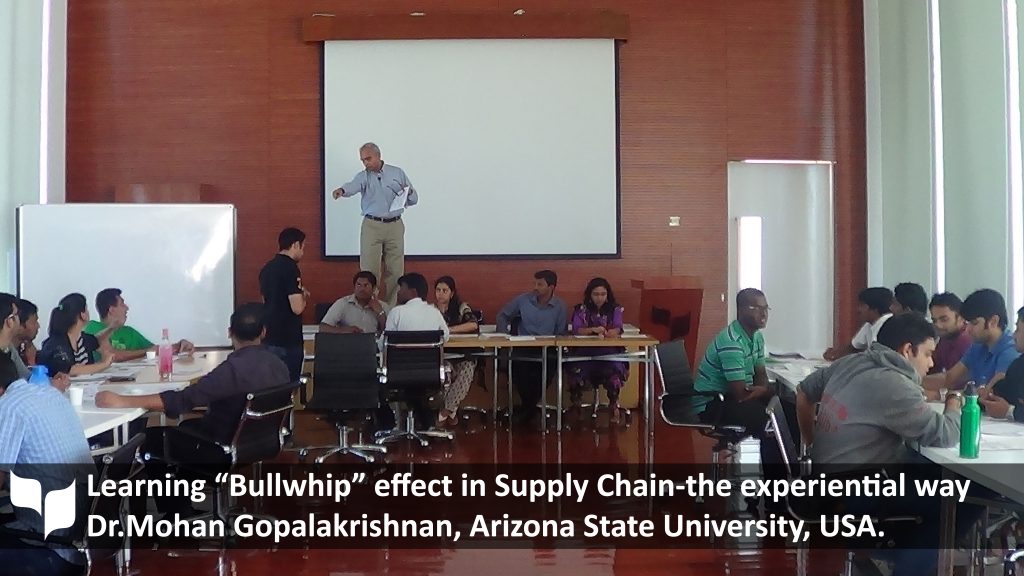It is a well-known fact that pure-lecture format connects very minimally with student learning, since the retention of what students learn through listening is touted to be around 10% or less. Hence, it is essential to weave a multi-event pedagogy to increase the interest to learn and hence, the retention of what was learned. The multiple events (in addition to the traditional lecture-based and case-based learning, included (a) experiential learning through site-visit; (b) Hands-on developing a product to simulate managerial issues around concurrent engineering and cost goals and (c) Simulating a supply chain to understand information asymmetry and its impact (“the bullwhip effect”).
- The first week of the course dealt with operations management and the second week dealt with supply chain issues.
- The operations management part focused on “managing business processes.”
- Specifically, lean and six sigma issues were the primary topics for discussion.
- Lean deals with waste reduction and six sigma variance reduction.
- Learning involved understanding and analyzing Toyota production system.
- The application domain included: operational issues in healthcare and new product development and cost.
For healthcare, three activities were designed to improve and appreciate the understanding of process management
- Readings pertaining to healthcare operations
- Exposure to Columbia-Asia, Mysore operations
Team from Columbia-Asia visited the MYRA campus and gave insightful guest lectures on topics as varied as process management, supply chain analysis, human resources etc.
Visit to Columbia-Asia hospital in Mysore to observe first-hand the different aspects of hospital operation and the challenges and issues related with improving their performance.
- Virginia-Mason hospital case for analysis and class discussion
For the concurrent engineering activity, the students worked in teams building a truck from Lego-blocks. They were asked to then cost the truck. Following this an experiment was conducted with half the class getting specific cost goal to achieve by redesigning the truck, while the other half got “do-your-best” as cost goal for the redesigning activity. In addition, some got all the specifications for redesign up-front while the others got it in a staggered fashion (the later simulating "set-based concurrent engineering”, a concept popularized by Toyota). The experimental setup helped students to understand, hands-on, the interaction between cost goals and design environments.
The second week dealt with supply chain processes. Specifically multi-event activities were planned to understand the impact of information asymmetry in supply chains, leading to a phenomenon called the “bull-whip effect.”
- First, readings such as “Gartner Rating of Top 25 Supply Chains in the world,” introduced the critical metrics that the top supply chains (such as Wal-Mart, Amazon, Intel etc.) excel in.
- A simulation game using role-play was used to depict a supply chain (made of 5 players) that simulated uncertainty in demand and supply and allowed players to understand the impact (through cost) of uncoordinated vs. coordinated supply chains.
- Barilla-SpA, a HBS case exposed the students to how the “bullwhip effect” plays out in a global supply chain, dealing with a staple product like pasta.
Thus the experiential learning activities provided the opportunity to improve learning by providing an interesting environment devoid of boredom and increasing the interest to learn.
-----------
This is a Promoted Story


